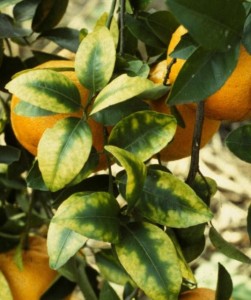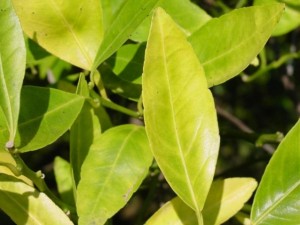The University of Florida IFAS Extension offers a database of fact sheets available for free download on the Internet called EDIS (Electronic Data Information Source) that has many publications of interest to farmers and ranchers in Northwest Florida. http://edis.ifas.ufl.edu Each fact sheet has a PDF or printer friendly link in the top left corner. The following are just a few of the new fact sheets that were recently added to the collection pertaining to fruit and vegetable crops.
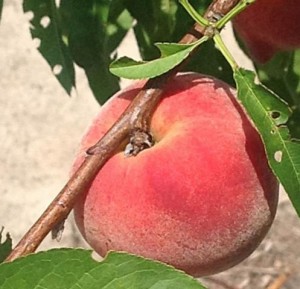 Florida Peach and Nectarine Varieties
Florida Peach and Nectarine Varieties
The University of Florida has developed high-quality, low-chilling, early-maturing peach and nectarine cultivars that can be grown from the panhandle of Florida to as far south as Immokalee. Low-chilling cultivars can grow and produce fruit under Florida conditions that are much warmer in winter than in northern states. Furthermore, ripening of these cultivars during April and May ensures an early spring market window for tree-ripe fresh fruit in Florida before peaches and nectarines from other southeastern states and California come to market. Both commercial and dooryard recommended varieties span the growing season. This 8-page fact sheet was written by Mercy Olmstead, Jose Chaparro, Pete Andersen, Jeff Williamson, and James Ferguson, and published by the UF Department of Horticultural Sciences, May 2013.
http://edis.ifas.ufl.edu/pdffiles/MG/MG37400.pdf
‘Florida Radiance’ Strawberry
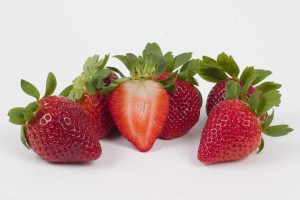 ‘Florida Radiance’ is a strawberry cultivar released from UF/IFAS in 2008. As of 2012, it has become a major cultivar in Florida and other winter and early spring production regions worldwide. In all markets outside the United States and Canada, it is marketed as ‘Florida Fortuna’. In addition to commercial production, it has been tested for many years in field plots at the UF/IFAS Gulf Coast Research and Education Center in Wimauma and the Florida Strawberry Growers Association headquarters in Dover for disease, fruit, and plant traits. This 4-page fact sheet was written by Vance M. Whitaker, Craig K. Chandler, Bielinski M. Santos, and Natalia A. Peres, and published by the UF Department of Horticultural Sciences, June 2013.
‘Florida Radiance’ is a strawberry cultivar released from UF/IFAS in 2008. As of 2012, it has become a major cultivar in Florida and other winter and early spring production regions worldwide. In all markets outside the United States and Canada, it is marketed as ‘Florida Fortuna’. In addition to commercial production, it has been tested for many years in field plots at the UF/IFAS Gulf Coast Research and Education Center in Wimauma and the Florida Strawberry Growers Association headquarters in Dover for disease, fruit, and plant traits. This 4-page fact sheet was written by Vance M. Whitaker, Craig K. Chandler, Bielinski M. Santos, and Natalia A. Peres, and published by the UF Department of Horticultural Sciences, June 2013.
http://edis.ifas.ufl.edu/pdffiles/HS/HS40000.pdf
Magnesium (Mg) for Citrus Trees
Magnesium deficiency has been a major problem in citrus production. In Florida, Mg deficiency is commonly referred to as “bronzing.” Trees with inadequate Mg may have no symptoms in the spring growth flush, but leaf symptoms develop as the leaves age and the fruit expand and mature in the summer and fall. Magnesium deficiency symptoms occur on mature leaves following the removal of Mg to satisfy fruit requirements. This 4-page fact sheet was written by Mongi Zekri and Tom Obreza, and published by the UF Department of Soil and Water Science, July 2013.
http://edis.ifas.ufl.edu/pdffiles/SS/SS58200.pdf
Nitrogen (N) for Citrus Trees
Nitrogen is the key component in mineral fertilizers applied to citrus groves. N has more influence on tree growth, appearance, and fruit production/quality than any other mineral element. Nitrogen affects the absorption and distribution of practically all other elements, and it is particularly important to the tree during flowering and fruit set. This 3-page fact sheet was written by Mongi Zekri and Tom Obreza, and published by the UF Department of Soil and Water Science, July 2013.
http://edis.ifas.ufl.edu/pdffiles/SS/SS58000.pdf
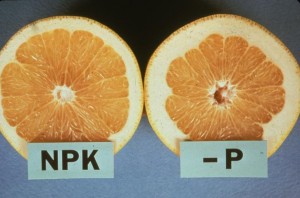 Phosphorus (P) for Citrus Trees
Phosphorus (P) for Citrus Trees
Phosphorus deficiency is not common in Florida citrus groves. If it does occur, it is more difficult to diagnose than nitrogen (N) deficiency or other nutrient element deficiencies. Growth is reduced when P supply is too low. Phosphorus is highly mobile in plants, so when it is deficient, it may move from old leaves to young leaves and other actively growing areas where energy is needed to form seeds and fruit. This 4-page fact sheet was written by Mongi Zekri and Tom Obreza, and published by the UF Department of Soil and Water Science, July 2013.
http://edis.ifas.ufl.edu/pdffiles/SS/SS58100.pdf
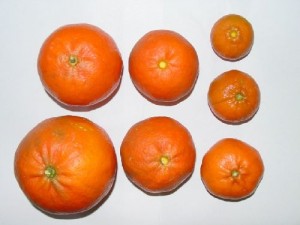 Potassium (K) for Citrus Trees
Potassium (K) for Citrus Trees
Citrus fruits remove large amounts of K compared to other nutrients. Potassium moves from leaves to fruit and seeds as they develop. Potassium is necessary for several basic physiological functions such as the formation of sugars and starch, synthesis of proteins, normal cell division and growth, and neutralization of organic acids. Potassium is important in fruit formation and enhances fruit size, flavor, and color. This nutrient also helps to reduce the influence that adverse weather conditions (such as drought, cold, and flooding) have on citrus trees. This 4-page fact sheet was written by Mongi Zekri and Tom Obreza, and published by the UF Department of Soil and Water Science, July 2013.
http://edis.ifas.ufl.edu/pdffiles/SS/SS58300.pdf
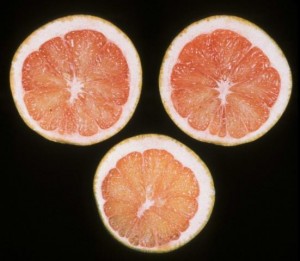 Calcium (Ca) and Sulfur (S) for Citrus Trees
Calcium (Ca) and Sulfur (S) for Citrus Trees
Calcium and sulfur are sometimes called secondary nutrients. This term does not mean that these nutrients play a secondary role in citrus plant growth and development. Ca and S are as essential as N, P, K, Mg, and other nutrients for healthy plant growth. An inadequate supply of Ca and/or S can be a major constraint to crop production and quality. This 5-page fact sheet was written by Mongi Zekri and Tom Obreza, and published by the UF Department of Soil and Water Science, July 2013.
http://edis.ifas.ufl.edu/pdffiles/SS/SS58400.pdf
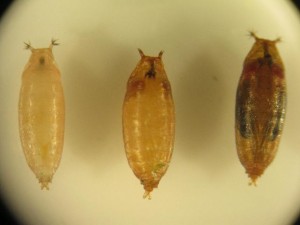 Spotted Wing Drosophila: Pest Management Recommendations for Southeastern Blueberries
Spotted Wing Drosophila: Pest Management Recommendations for Southeastern Blueberries
The spotted wing drosophila is a recently discovered invasive species native to parts of East Asia. It was first detected in the continental United States in California in 2008 and in Hillsborough County, Florida in 2009. Since then, the spotted wing drosophila has spread to over 28 counties in Florida. SWD is polyphagous, meaning it feeds on many different host plants, including most thin-skinned fruits. The major hosts of concern to the Florida agriculture industry are blueberries, strawberries, blackberries and grapes. This 5-page fact sheet was written by Oscar E. Liburd and Lindsy E. Iglesias, and published by the UF Department of Entomology and Nematology, June 2013.
http://edis.ifas.ufl.edu/pdffiles/IN/IN99800.pdf
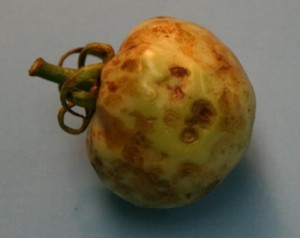 Tomato Chlorotic Spot Virus
Tomato Chlorotic Spot Virus
Tomato chlorotic spot virus (TCSV) is a tospovirus, similar to but distinct from other tospoviruses currently present in Florida. Like these viruses, TCSV is transmitted by thrips and is able to replicate in both the vector and the plant. TCSV was first reported in Florida in 2012 in tomato plants in Miami-Dade and Lee Counties, but it may have been in the state for several years. Prior to 2012, TCSV was only known to occur in Brazil and Argentina. It is not known how this virus was introduced into Florida. This 5-page fact sheet was written by Jane E. Polston, Erin Wood, Aaron J. Palmateer, and Shouan Zhang, and published by the UF Department of Plant Pathology, May 2013.
http://edis.ifas.ufl.edu/pdffiles/PP/PP30600.pdf

